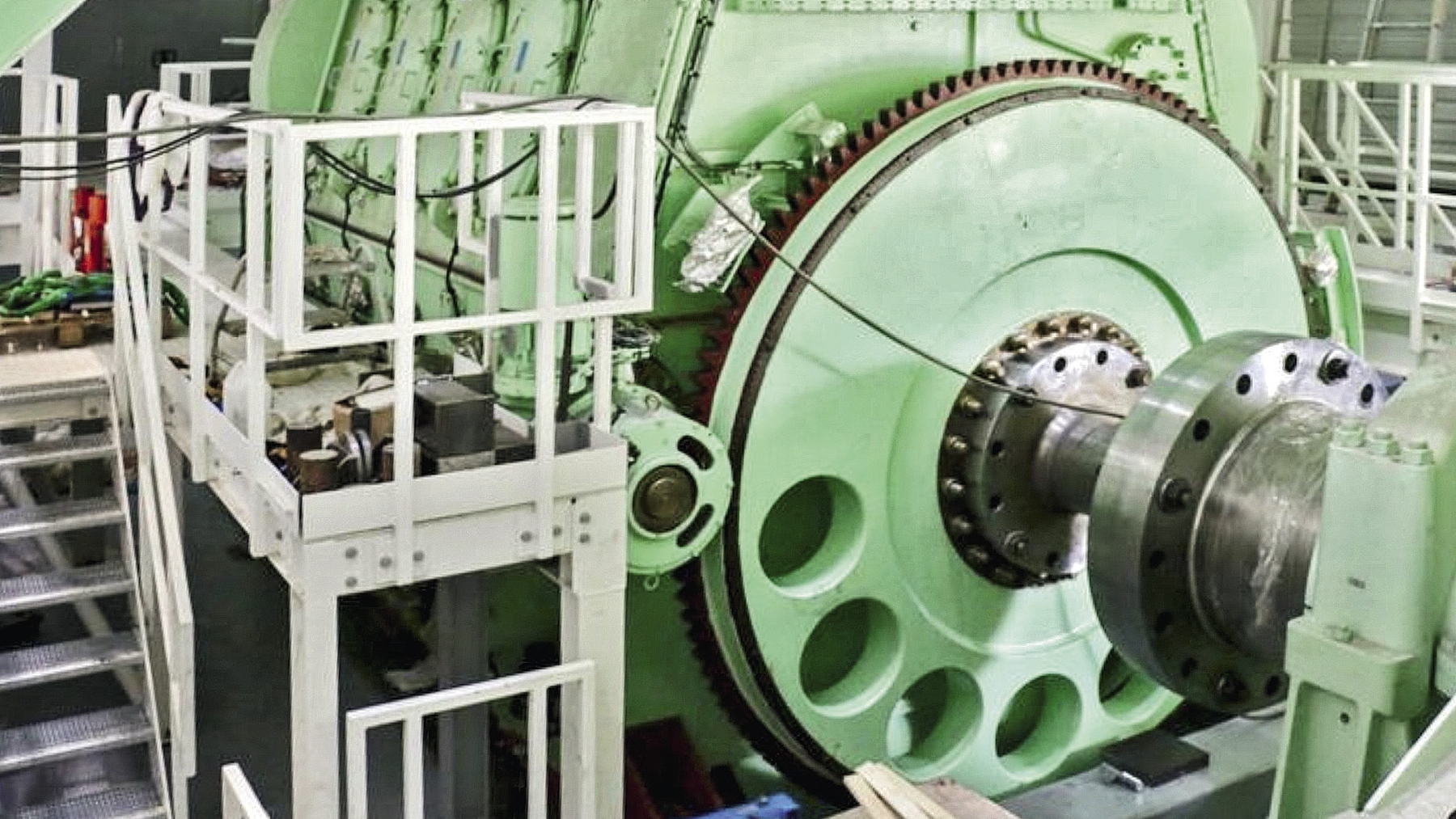When we celebrated Christmas 12 months ago, we had no idea what a terrible 12 months lay ahead of us. This Christmas, however, we can hope for a better year. There are at least three Covid vaccines (or a fourth if we include the Russian 'Sputnik') that should be in production by the end of the year and available to the public soon. So life will return to normal.
But will it return to normal? Perhaps not. Many agree that the pandemic has acted as an accelerator. For example, the pandemic has already proved to be a coup de grace for businesses that were already struggling. These include department stores, restaurants and airlines. The disease, on the other hand, has boosted online businesses, especially food from supermarkets and restaurants, but clothing and non-food items have also been purchased online.
Online shopping is, in itself, an efficient way to transport goods from the manufacturer (or department store) to the customer, which means lower prices. Online shopping will become even more efficient, as I will note later.
With a vaccine, economists promise us a V-shaped, i.e. a rapid economic recovery. So 2021 promises to be a better year. And yet there are dark clouds on the horizon.
 Fig. 1: A warning to Germany from an expertGermanpublishing houses - and I am of course including Verlag Leuze - are among the best in the world. But they are hampered by the language barrier, and many German books do not reach the audience they deserve. But from time to time, a book published in Germany is considered so important that it attracts worldwide attention. One such book is "Wer hat Angst vorm BND" (Ullstein, Fig. 1).
Fig. 1: A warning to Germany from an expertGermanpublishing houses - and I am of course including Verlag Leuze - are among the best in the world. But they are hampered by the language barrier, and many German books do not reach the audience they deserve. But from time to time, a book published in Germany is considered so important that it attracts worldwide attention. One such book is "Wer hat Angst vorm BND" (Ullstein, Fig. 1).
The 68-year-old author Gerhard Schindler was formerly head of the BND. As such, he will be better informed about international threats than almost anyone else in Germany. In the book, he warns of the dangers to which Germany is exposed, primarily from China, but also from religious fanatics who have come to Germany in recent years. Interestingly (and I would agree), he sees Russia as less of a threat. As the years go by, Europe will buy less and less oil and gas from Russia, and we don't buy much else from Russia either. Schindler's book was written before the recent atrocities in Paris and Nice, which confirm his foresight and wisdom. His message is that while international trade (including with China) is important, politicians should not overlook the bigger picture and future threats from an increasingly aggressive superpower. The author notes that Germany is still undecided about Huawei 5G technology, pointing out that Huawei technology is so advanced that German experts do not know whether it contains a hidden backdoor or not. Most Western nations have decided that the risk is too great and will not deploy Huawei 5G systems.
China is increasingly using its power to threaten or punish countries it dislikes. For example, when the Australian government raised questions and exposed the Covid pandemic and its origins, China immediately imposed a tariff on imports of Australian barley and other products. The UK is now under increasing pressure to buy Chinese nuclear technology and could also be penalized if it refuses to do so. Germany has some tough decisions ahead!
E-mobility: Is a race on the horizon?
The future of mobility is electric. The UK government announced that the sale of petrol/diesel cars will be phased out in 2040. Then it brought the date forward to 2035 and now, it seems, to 2030. There are alternatives to e-mobility, which I will discuss later. But increasingly the question is whether to opt for batteries or fuel cells.
At present, the position seems to be batteries for cars, fuel cells for trucks and other large appliances. Tesla seems to be committed to battery power. The British luxury brand Bentley (owned by VW) has just announced that it plans to offer only electric or hybrid models by 2026 and will be 100% electric by 2030. More and more companies are realizing that the cost of launching a new brand is quite modest as all components can be sourced from third party suppliers. A British start-up, Arrival (www.arrival.com), has received 120 million dollars from American Blackrock, the world's largest asset manager. It has received similar sums from Hyundai and Kia. It will build battery-powered delivery vans for companies such as the Royal Mail in the UK and the US Postal Services. Figure 2 shows an example.
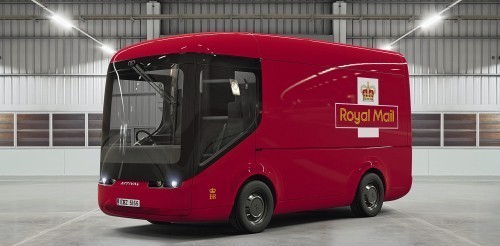 Fig. 2: Battery-powered delivery van for the UK's Royal Mail
Fig. 2: Battery-powered delivery van for the UK's Royal Mail
The business is based on a series of "micro-factories" in Europe, the US and the UK. Figure 3 shows the microfactory under construction in South Carolina, which is due to open in about a year. It is clear that the delivery of letters and parcels in cities and towns is an ideal application for electric vehicles. But the company also manufactures electric city buses, for which the same applies. Arrival was founded by a Russian emigrant, Denis Sverdlov. He claims that his electric vehicles will cost as much as their diesel-powered equivalents. He also says that his manufacturing process, based on said micro-factories, is cheaper than conventional, very large production facilities. The company is aiming to match the price of the Mercedes-Benz "Sprinter". I could also mention another relatively new American start-up, Rivian (www.rivian.com), which makes SUVs and small commercial vehicles. Amazon has ordered 100,000 of them - yes, 100,000! delivery vehicles from the company, which has won an investment of around 3 billion dollars and now employs over 3000 people. The first Amazon delivery vehicles will go into service next year.
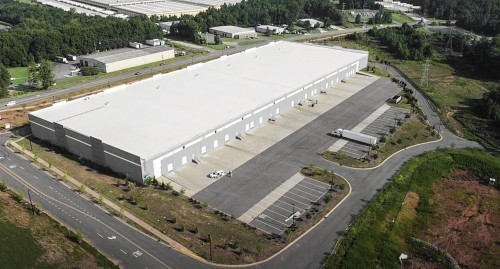 Fig. 4: Hydrogen-powered excavator
Fig. 4: Hydrogen-powered excavator
American car giant GM (General Motors) has been slow to move into e-mobility, but has recently fully committed to an electric future under chief executive Mary Barra. Instead of using batteries, however, GM seems to see a future based on hydrogen fuel cells. The GM off-road vehicle "Badger" is scheduled to go into production at the end of 2021. GM has teamed up with a smaller company, Nikola(www.nikolamotor.com ). Nikola has been in the news recently and has been accused of misleading advertising (they produced a video showing their truck driving, but in reality it was driving downhill and had no engine) and other legal problems. But their so-called "semis" (articulated trucks) of up to 40 tons have a range of about 1000 km, can be refueled in a few minutes and have excellent acceleration. GM will soon be launching a series of new vehicles (e.g. the military-civilian HumVee) that are based on fuel cells rather than batteries, with all models having a relatively small battery for standby operation.
Buses and construction machinery
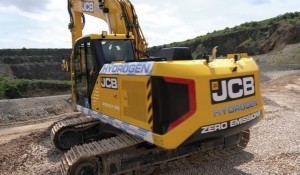 Fig. 4: Hydrogen-powered excavatorFig.4 shows a hydrogen fuel cell-powered excavator from JCB. Its sister company in Northern Ireland, Wrightbus (www.wrightbus.com), is building single and double-decker fuel cell buses, while Siemens and DB are testing hydrogen-powered rail trains. So it's all good news? Answer: No. Readers will wonder
Fig. 4: Hydrogen-powered excavatorFig.4 shows a hydrogen fuel cell-powered excavator from JCB. Its sister company in Northern Ireland, Wrightbus (www.wrightbus.com), is building single and double-decker fuel cell buses, while Siemens and DB are testing hydrogen-powered rail trains. So it's all good news? Answer: No. Readers will wonder 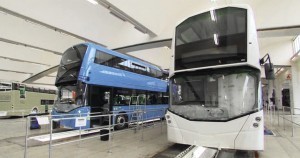 Fig. 5: Fuel cell buses from Wrightbus Ltd. in Northern Irelandwhere the hydrogen actually comes from. There appear to be three options. The first is local water electrolysis plants. The technology is mature, but electrolytic hydrogen is not cheap. The second option would be tanker trucks that deliver hydrogen to filling stations, just as gasoline/diesel is delivered today. The third option would be a hydrogen network, just as we have a natural gas network today. In this scenario, the hydrogen would be used for home heating. Another option would be to use the existing natural gas network to transport a mixture of natural gas and hydrogen. Hydrogen could then be selectively extracted from this mixture using Ag-Pd membranes or similar technology. Proponents of battery technology point out that we already have an electricity grid, which is true. I suspect that in the next decade at least, both batteries and fuel cells will become increasingly important as fossil fuels are phased out, but each in a specific sector.
Fig. 5: Fuel cell buses from Wrightbus Ltd. in Northern Irelandwhere the hydrogen actually comes from. There appear to be three options. The first is local water electrolysis plants. The technology is mature, but electrolytic hydrogen is not cheap. The second option would be tanker trucks that deliver hydrogen to filling stations, just as gasoline/diesel is delivered today. The third option would be a hydrogen network, just as we have a natural gas network today. In this scenario, the hydrogen would be used for home heating. Another option would be to use the existing natural gas network to transport a mixture of natural gas and hydrogen. Hydrogen could then be selectively extracted from this mixture using Ag-Pd membranes or similar technology. Proponents of battery technology point out that we already have an electricity grid, which is true. I suspect that in the next decade at least, both batteries and fuel cells will become increasingly important as fossil fuels are phased out, but each in a specific sector.
What is the future for liquid fuels?
Is there a future for fossil fuels? The consensus is that the election of President Biden in the US will accelerate the greening of the US. President Trump didn't seem to believe in global warming. Coal is the dirtiest of all fossil fuels and in the UK the last coal-fired power station will close by 2025 at the latest. In due course, the same will apply to oil or gas-fired CHP. The only technology that could change this would be so-called. CCS - carbon capture and storage. At present, CCS technology is proving difficult and expensive. But liquid fuels are so convenient. We have biofuels, e.g. biodiesel, and a small plant in England makes aviation fuel from local restaurant waste fuel. But the economics of biofuels are fragile.
Figure 6 shows known options.
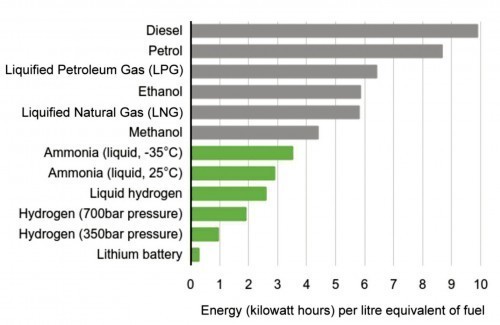 Fig. 6: Energy content of various fuels. Gray = CO2-emitting fuels, green = "green" fuels
Fig. 6: Energy content of various fuels. Gray = CO2-emitting fuels, green = "green" fuels
The best "green" fuel in Figure 6 is ammonia, which is why MAN Energy Solutions is testing a full-size marine engine at its Copenhagen facility (Fig. 7). Strangely, however, Figure 6 does not show another potential "green" fuel, namely formic acid. Researchers in Cambridge (UK), led by Professor Erwin Reisner and others in the US, have produced formic acid fromCO2, water and sunlight using simulated photosynthesis. Figure 8 shows a synthetic "leaf".
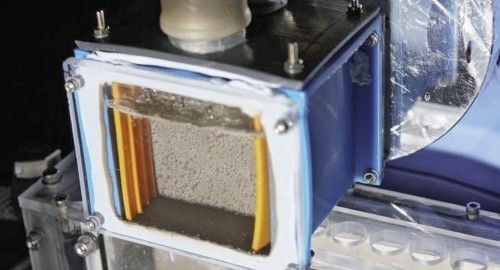 Fig. 8: A synthetic leaf produces formic acid using photosynthesis
Fig. 8: A synthetic leaf produces formic acid using photosynthesis
Am I being irrational?
I like to walk, cycle, travel by car or train. I have flown by plane (although not often). But somehow I would be extremely uncomfortable sitting in a small capsule with perhaps 15 or more fellow passengers, being propelled forward at high speed in an airless metal tube. That's a description of the Virgin Hyperloop, which recently reached a new milestone. A few weeks ago, the Hyperloop carried its first two passengers (both company employees) on a 500-meter test track at its development station in Nevada (Fig. 9). They reached a top speed of 170 km/h during their 15-second journey. However, the goal is to travel at speeds of 1000 km/h or more. The capsules are powered by linear electric motors. It is not clear where and when the first full-scale Hyperloop will be built. There are plans for it in the USA, South Korea and Saudi Arabia, but nothing has been finalized yet. The whole basis of the idea is that this mode of transportation can achieve the same speed as a modern airplane, but at a fraction of the cost, and in a completely "green" way. Air travel is becoming cheaper and cheaper and could soon be just as "green" and of course require no infrastructure other than an airport. I'll leave it to the reader to figure out for themselves what to do if there was some kind of failure and they were stuck in their little capsule in a metal tube - in a vacuum.
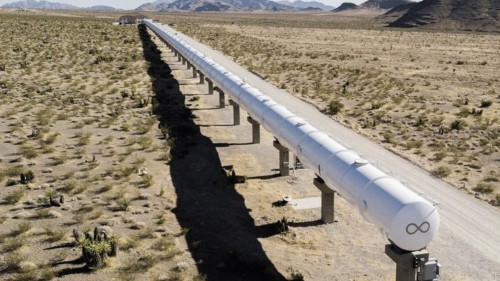 Fig. 9: Virgin Hyperloop test track in Nevada
Fig. 9: Virgin Hyperloop test track in Nevada
A new life for an old story
It is generally accepted that there is only one way to dissolve precious metals such as gold, and that is by using aqua regia, a mixture of hydrochloric and nitric acid. This is a dangerous liquid and not easy to dispose of safely. Fifteen years ago, a Dutch scientist, Koen Binnemans, came across notes made by a former worker, Charles Austen Angell, in 1973, in which he claimed that aluminum salts in solution could dissolve the precious metals, and faster than in aqua regia. Dr. Angell promised to publish the results of his work at the time, but never did, and the whole idea was forgotten until Dr. Binnemans came across it by chance. Now he and his team at the KU Leuven have published their first results. They used a highly concentrated mixture of AlCl3 and Al(NO3) to dissolve precious metal scrap wires and car exhaust catalysts. In the case of palladium, the nitrate ions formed the metal and a chloropalladate(II) complex from the oxidized metal and chloride ions, which was stable at low pH values. After a few hours, the palladium had completely dissolved and the palladium metal was then recovered by reduction with ascorbic acid. The same was found for platinum, although it took slightly longer. However, the approach did not work for rhodium, which requires more extreme conditions. The group at KU Leuven is now investigating the recovery of platinum group metals and gold from fuel cells and electronic waste. They plan to use other metal salts to see if they behave in the same way. What other hidden secrets lie in the literature of the past?
Source: (open access, full text). F. Forte et al. Chemical Communication 2020 vol 56 ss 8230. DOI: 10.1039/d0cc02298e
Robotics on the rise
Robots are clever, but so far they have shown at least one weakness. When a robotic arm tries to pick up an object, it finds it difficult to know how hard it should grip it. Knowing the shape and size of the object is also a problem for the robot.
This is a particular challenge in automated supermarkets, where we buy soft fruit, hard tin cans and cardboard boxes, among other things. Scientists at the University of Berkeley have reduced the decision time of a robot grasping an unknown object from 29 seconds to 80 milliseconds. According to Professor Ken Goldberg, team leader at UC Berkeley, the use of robots in supermarkets and warehouses could now change. Warehouses are still mainly operated by humans, as it is still very difficult for robots to reliably grasp many different objects. In an automated assembly line, the same movement is repeated over and over again so that it can be automated. But in a warehouse, every order is different.
Professor Goldberg and his colleagues previously wrote software that could tell a robot what type of grasp to use and how to transport an object from one place to another. However, the robot did not know how fast it could move an object in its grasp, meaning the object could be thrown to the floor. Although the software could be adjusted to create a smoother movement, this took some time. Therefore, the team added a neural network to the robot software. The network evaluated the way a robotic arm moved as it picked up and transported thousands of objects over several weeks.
The network learned the best gripping and movement path for the robot. Combined with the team's previous software, this allows a robotic arm to drastically reduce its decision making time. "Every second counts. Current systems spend up to half of their cycle time on motion planning, so this method has the potential to dramatically speed up picks per hour," says Professor Goldberg. In related work carried out at the National University of Singapore in July, researchers said they had developed an artificial skin that allows a robot to recognize what it is touching. It is also able to recognize the shape, texture and hardness of an object 1000 times faster than the human sensory nervous system. For us as consumers, this is all good news. For the unskilled department store clerk, not so much.
Source: Deep Learning Can Significantly Accelerate Grasp-Optimized Motion Planning, J. Ichnowski, Y. Avigal, V. Satish, K. Goldberg, Science Robotics, V5(48) 18 Nov 2020
Note from the editor:
The political content printed in the "Letter from England" does not necessarily reflect the views of the publisher and editors, but are the personal opinions of the author.

